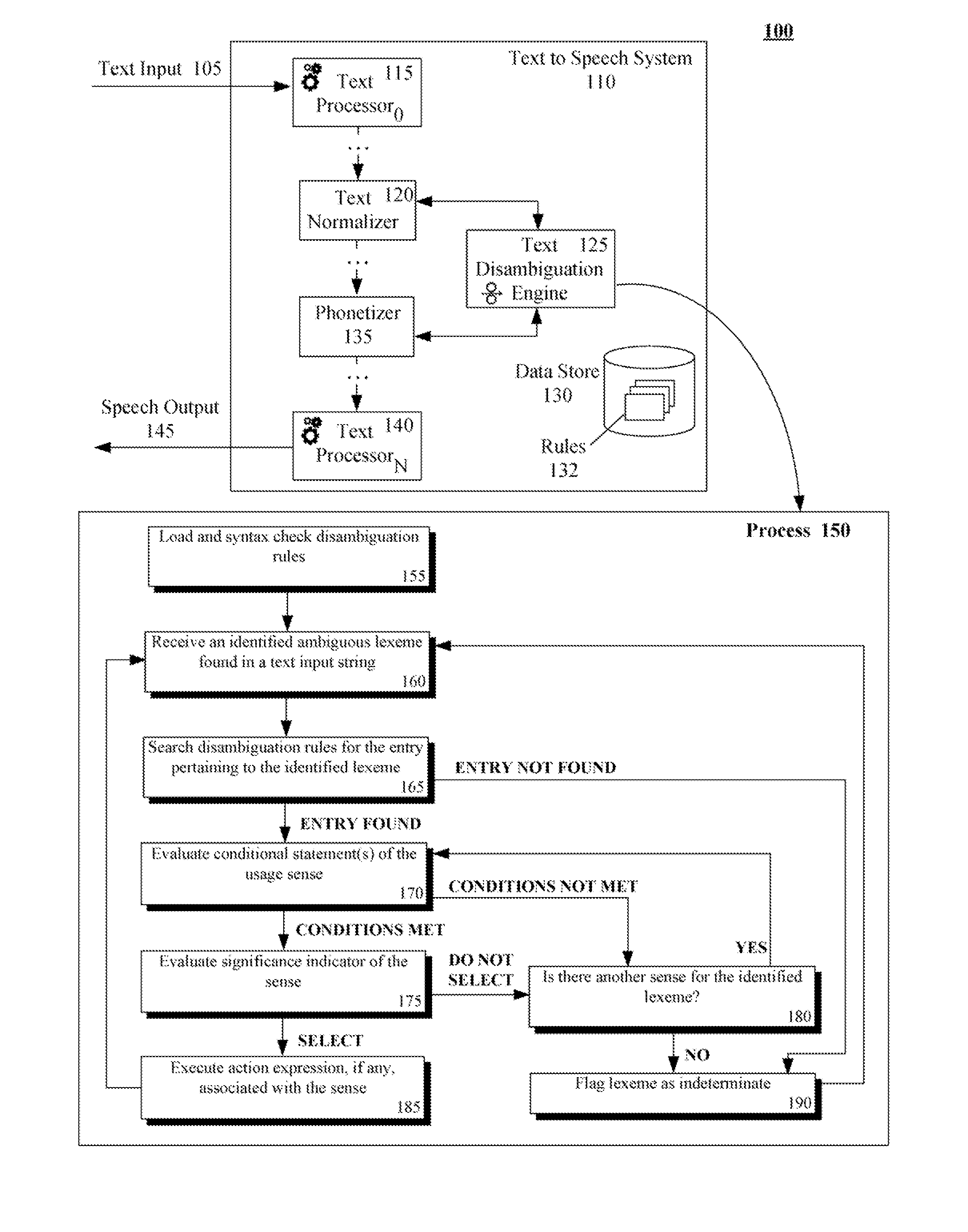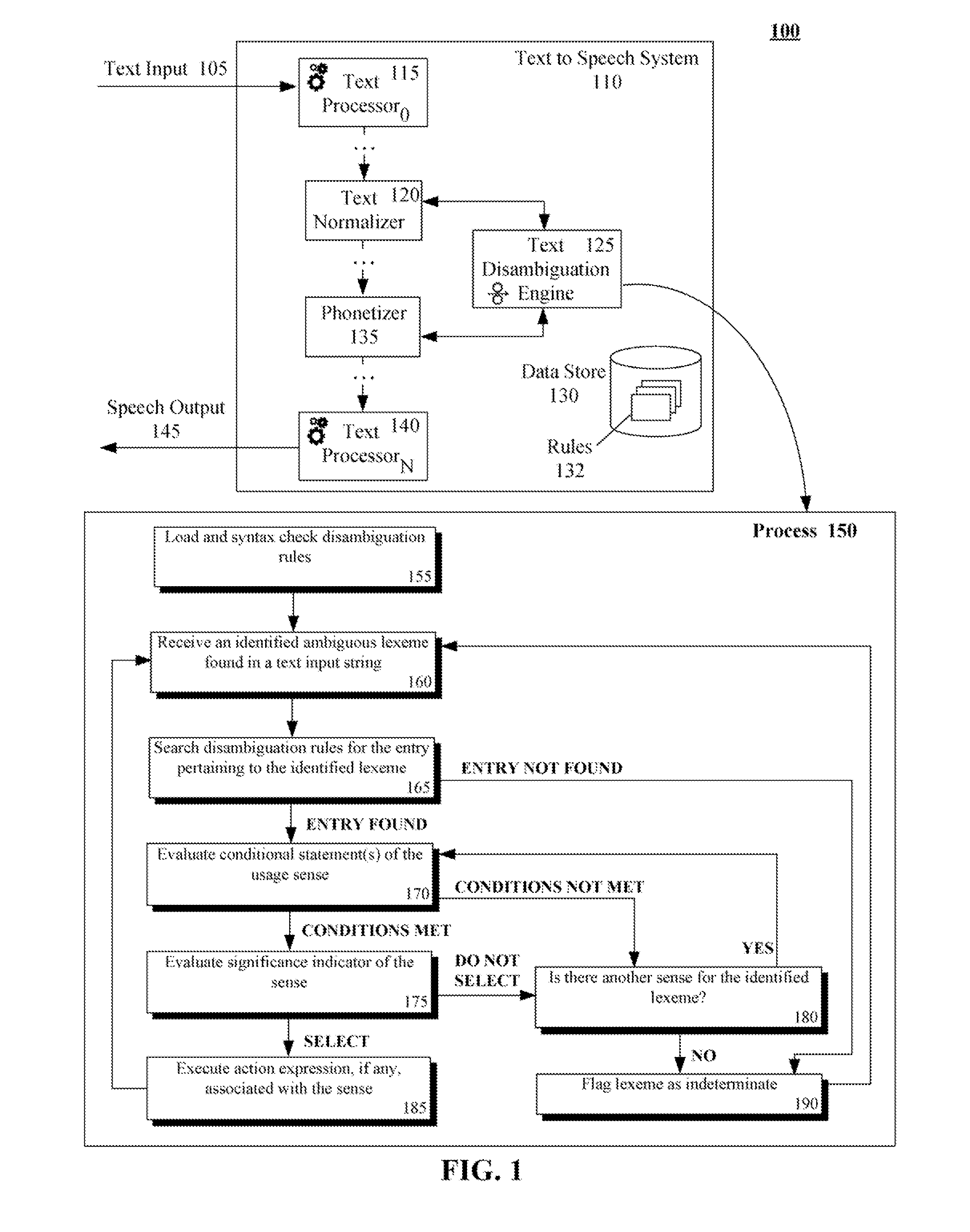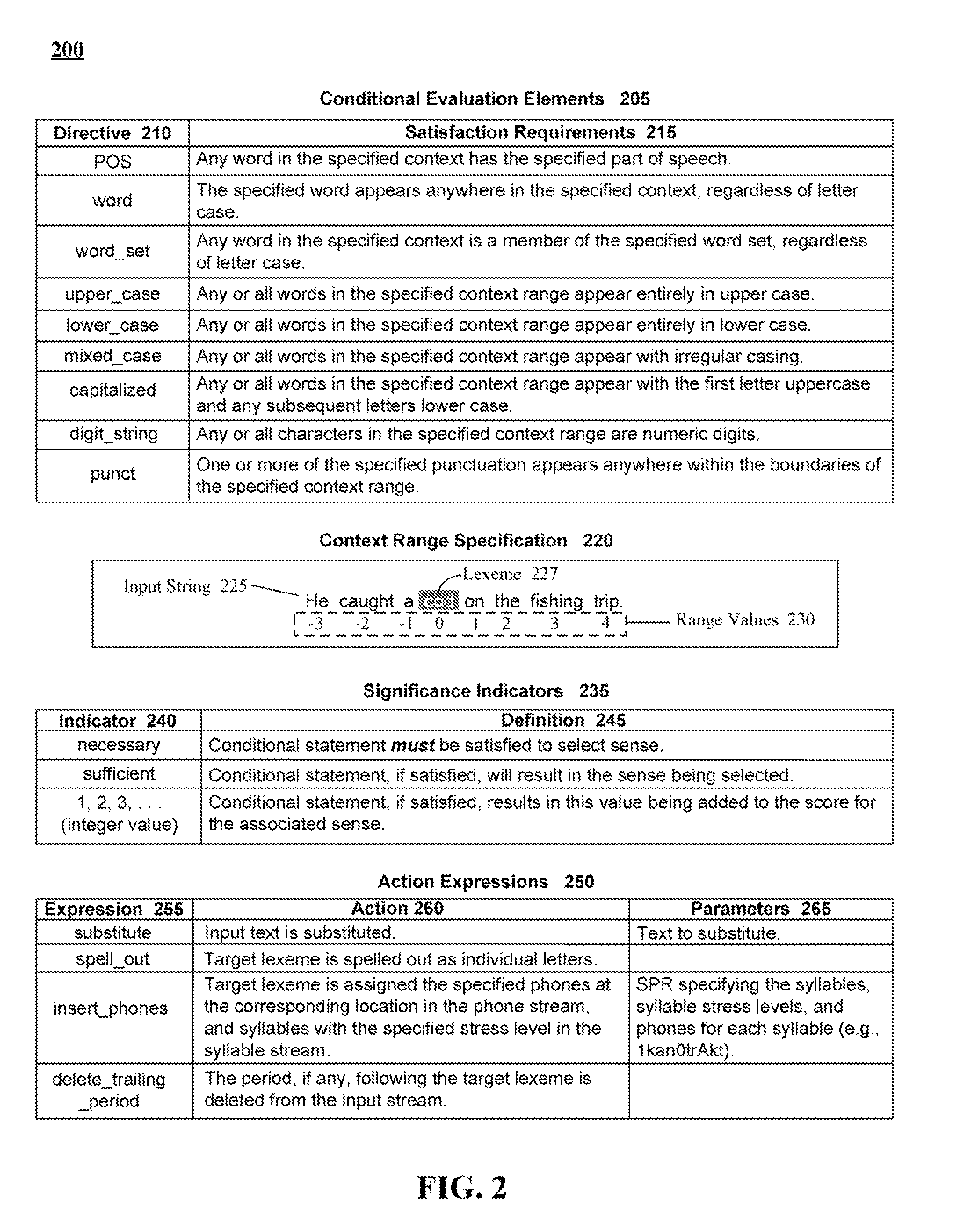Disambiguating text that is to be converted to speech using configurable lexeme based rules
a text and speech technology, applied in the field of text-to-speech processing, can solve the problems of preventing an accurate determination of the speech part, unable to effectively handle the construct that does not exist, and unable to handle the construct effectively
- Summary
- Abstract
- Description
- Claims
- Application Information
AI Technical Summary
Benefits of technology
Problems solved by technology
Method used
Image
Examples
Embodiment Construction
[0018]FIG. 1 is a compound diagram illustrating a system 100 utilizing a process 150 to disambiguate text using configurable lexeme based rules in accordance with embodiments of the inventive arrangements disclosed herein. System 100 can accept and process text input 105 to produce speech output 145. The text input 105 can be a string of alphanumeric characters, which can be provided by a computing system or person.
[0019]Ambiguous text constructs, such as acronyms, abbreviations, homograph, and the like, can be contained within the text input 105. As used herein, acronym can refer to a word formed from emphasized letters or syllables of other words, such as FAQ or DNA. An abbreviation can be a shortened form of a word or phase, just as NYC is short for New York City. A homograph can be one of two or more words alike in spelling, but different in meaning, derivation, or pronunciation. For example, the word “lives” can have different meanings and pronunciation depending upon use (e.g....
PUM
 Login to View More
Login to View More Abstract
Description
Claims
Application Information
 Login to View More
Login to View More - R&D
- Intellectual Property
- Life Sciences
- Materials
- Tech Scout
- Unparalleled Data Quality
- Higher Quality Content
- 60% Fewer Hallucinations
Browse by: Latest US Patents, China's latest patents, Technical Efficacy Thesaurus, Application Domain, Technology Topic, Popular Technical Reports.
© 2025 PatSnap. All rights reserved.Legal|Privacy policy|Modern Slavery Act Transparency Statement|Sitemap|About US| Contact US: help@patsnap.com



